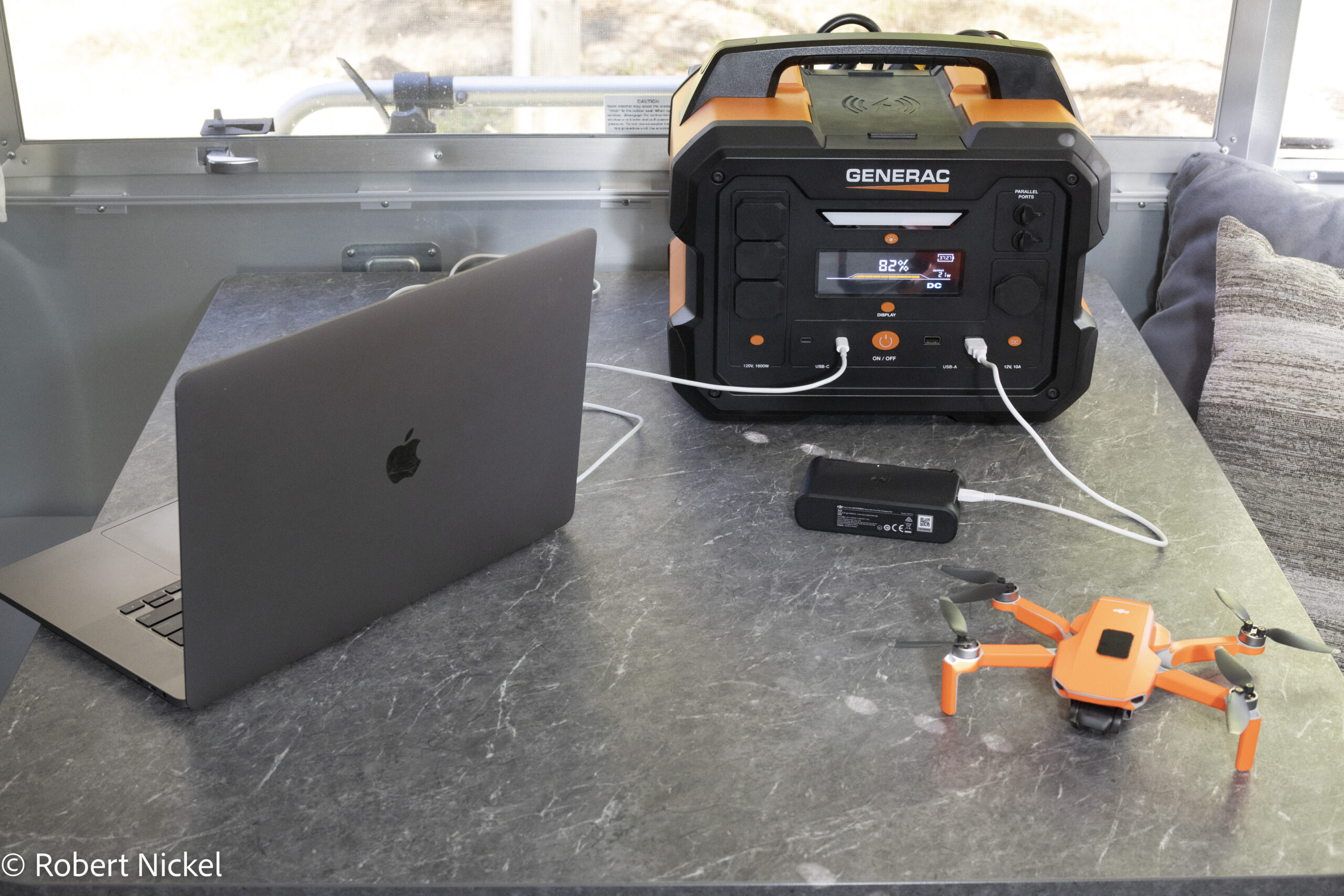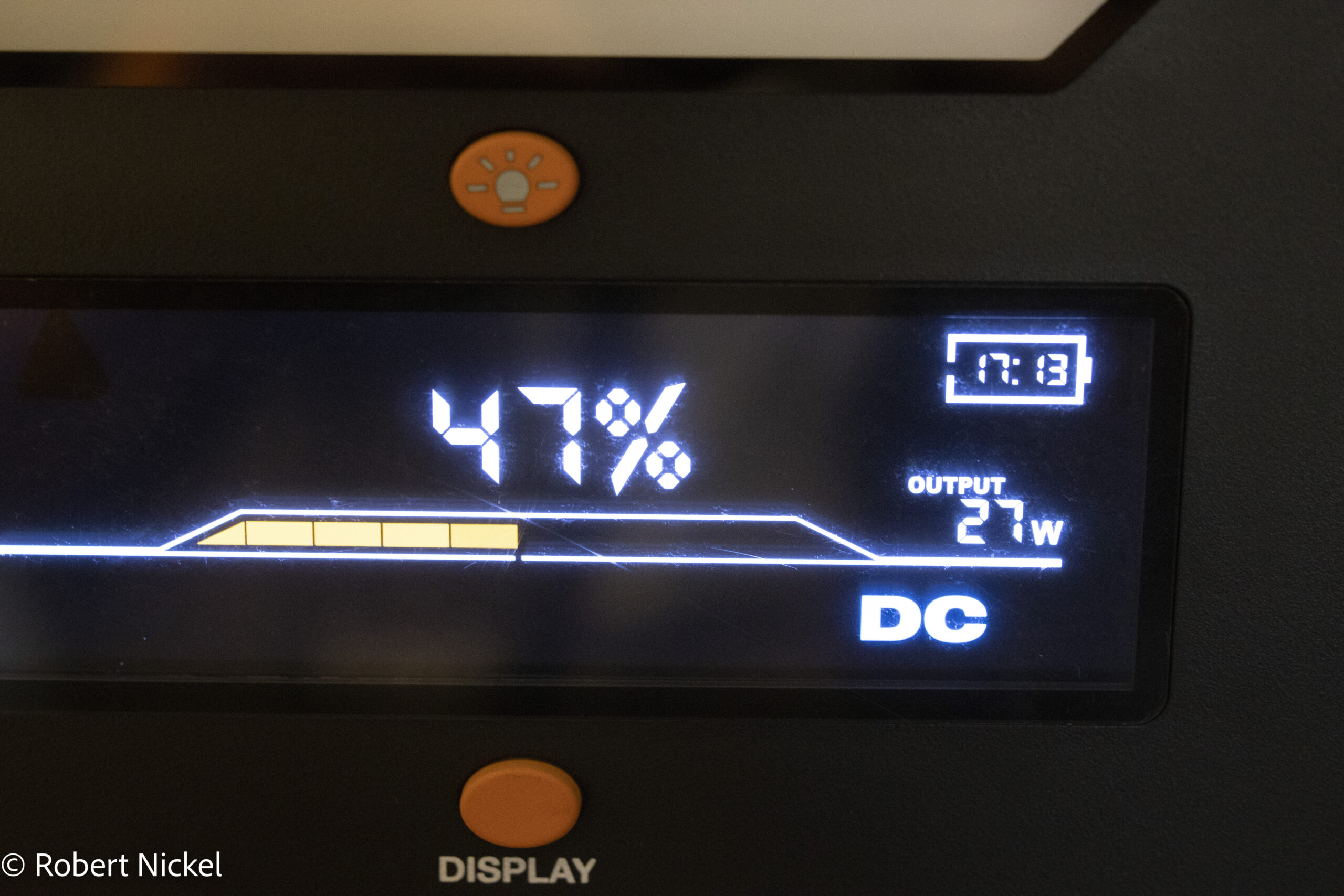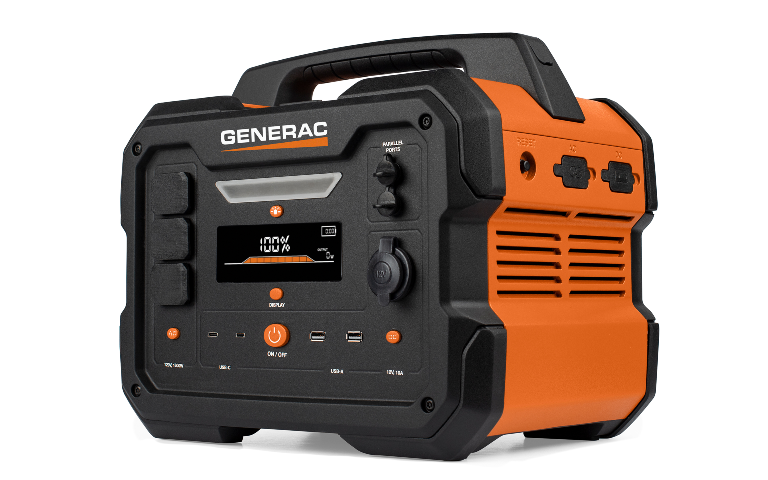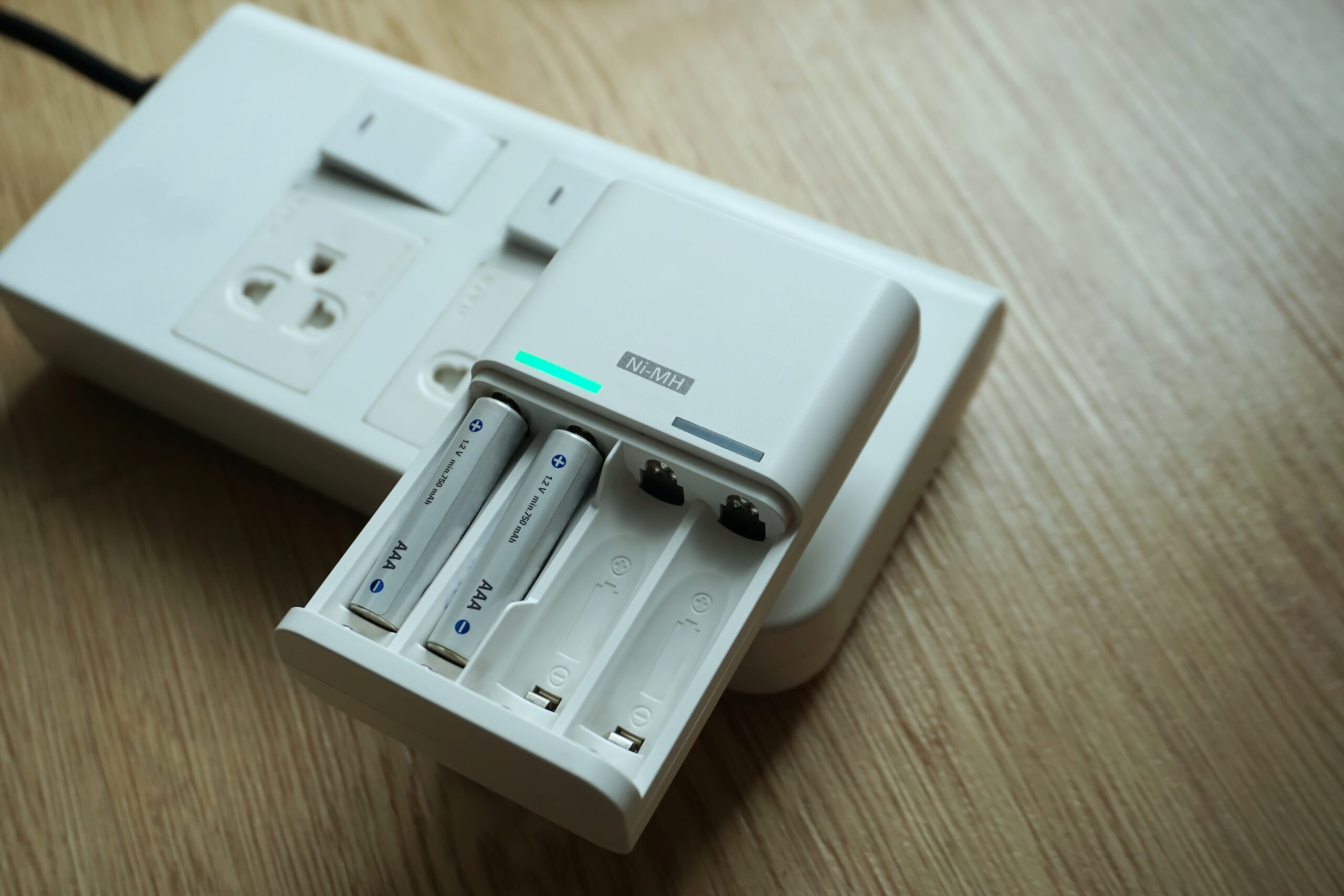
Generac Offers A Quality Portable Power Station For Campers
Generac is one of the biggest names in emergency power supply, so I was excited to take a look at their new portable power station, the Generac GB1000 (priced at $999).
Generac GB1000 Specs
The GB1000 portable power station measures approximately 14”L x 10”W x 12” H, so it’s nice and compact with a low profile handle that I like.
Weighing in at 27 pounds, the GB1000 is very easy to carry around a campsite where it’s needed. The unit has a large LED display that is easy to read and has a large counter that shows the remaining percentage of charge. It also has a small counter that shows the time remaining for the charge with the current discharge rate. This counter changes in real time, giving you an accurate measure of the time left on the battery.
As the name implies, the total battery pack capacity is 1086 watt-hours, and the portable power station has three AC outlets rated at 1600W with 3200W surge capability. There are also two USB-A ports (15.5 watts max each) and two USB-C ports (65 watts max each), along with a 12V car port (120 watts max) and wireless charging (15 watts max). It can be charged using 120V AC power or DC charging from a vehicle or solar panels, although Generac does not currently offer solar panels for the unit.

The portable power station also has a small display that shows the current discharge rate in watts. This is handy for planning purposes, as you can see which devices are using the most power.
One feature Generac included is a flexible rubber pocket on the back of the unit for cable storage. I read reviews of other manufacturers and the lack of cable storage was an issue for some, so having this feature is a nice perk. Generac also offers the GB 2000 ($1799) that doubles all of the capacities of the GB1000 and is larger and heavier at 43 pounds.
Charging and sound levels
When we received the Generac GB1000, the battery had a 36% charge, and I plugged it into the wall of my dining room to charge. It reached a 100% charge in about an hour and 45 minutes, so it recharges at a fast rate.
The only issue was the loudness of the charging process. From what I’ve read, the GB1000 is no louder that the competition, so the volume does not detract from the value of the unit. Using my handy but unscientific Apple Watch Sound Levels, I measured the decibels at around 70 right next to the fan and about 50 decibels standing nearby. Not so loud to cause any kind of hearing damage, but too loud to carry on a conversation nearby.
Charging out in the garage is a must. It was also quite loud using the DC charger in the car, but hey, that’s why you play your music loud while you drive, right?
All joking aside, it would be distracting to say the least to have the power station charge while driving down the road. Again, many of the portable power stations have the same issue, so Generac is not alone in this. The Generac GB1000 has a lot of great features. The question is, is it right for us?
Do you need a portable power station?
We like to think of ourselves as pretty ordinary RV weekend warriors. There are three of us that travel: my wife, our son, and I usually stay at RV parks on our outings. We almost always have full hookups or at least water and power.
Once in awhile, we stay at a Harvest Host location for a night or rarely in a parking lot somewhere on our way to a full hookup site. We don’t boondock for extended periods, although the idea of doing so is appealing.
The main issue for us when it comes to boondocking is power, or more specifically, running out of it. Our Airstream is fitted with two solar panels and two AGM batteries, so one night boondocking is possible, maybe two if we’re judicious with our electricity.
We have a gas generator, but it’s pretty noisy, and in my mind, the whole idea of boondocking is to enjoy the quiet. We could add an extensive solar package to our trailer, but hey, I haven’t won the lottery and it’s a lot of money to invest when we would only need to use it occasionally. So, that leaves me searching for that power source that hits our sweet spot. Perhaps a portable power station, specifically, the Generac GB1000 would meet our needs.
Our power needs when camping
Our needs for power while boondocking are fairly simple: coffee, toast, Instant Pot, cooling, and charging electronic devices. Oh, and the dreaded hairdryer, the bane of all power sources.
By cooling, I mean only a small portable electric fan. We live in Virginia, so to be honest, summertime boondocking is out. It’s just way too hot to not have air conditioning, so the cooling is more for the spring and fall seasons.
Our trailer can handle our power needs for one day, but if we want to stay disconnected longer, we’re going to need some help.

Real-world testing of the GB1000
With these requirements in mind, I set out to see if the GB1000 would meet our needs. I wanted to see if the unit would help us make it through a typical day for us out on the road. To test this, I made four cups of coffee with our Keurig coffee maker (1560 watt peak), six slices of toast with a standard two-slice toaster (900 watt), and one and a half cups of rice in our Instant Pot (1100 watt peak). I then ran the hair blowdryer (1300 watts) for five minutes and ran a portable fan (95 watt) for 30 minutes.
While the coffee maker and the Instant Pot had high wattage peaks, overall they were not big energy hogs, as they often ran at much lower wattage in their cooking processes. As expected, the hairdryer was an energy killer, as was the toaster, but only for a short period of time. With all of these uses, the GB 1000 still had 52% of its charge remaining. Charging my computer and phone had a minimal impact, leaving just under 50% of the charge remaining at the end of the day.
Success! We could make it through at least one extra day boondocking using the GB1000, maybe even two.
Miscellaneous testing of the GB1000
I also did some testing of the GB1000 that was not related to our everyday camping needs. I washed my trailer and then used a leaf blower to dry it off. (Yes, I use a leaf blower to dry off my trailer, it does a great job of eliminating water spots on aluminum.)
It took me about 20 minutes to dry the whole trailer and the GB1000 performed exactly as planned. The leaf blower uses about 1000 watts, and after 20 minutes, the unit was down to 80%, just like the math said it should be. The GB1000 is also portable enough to be practical for charging my drone batteries out in the field.
Conclusion
It turns out I really like the Generac GB1000 and found it to be a practical solution for us when camping. It’s relatively small and lightweight, and I like the design with the low profile handle and the storage for cables on the unit. It performed very predictably and meets all of our relatively simple power needs for limited boondocking. What more could I ask?
Forums such as iRV2.com and blog sites like RV LIFE, Do It Yourself RV, and Camper Report provide all the information you need to enjoy your RV. You’ll also find brand-specific information on additional forums like Air Forums, Forest River Forums, and Jayco Owners Forum.
Related articles:


